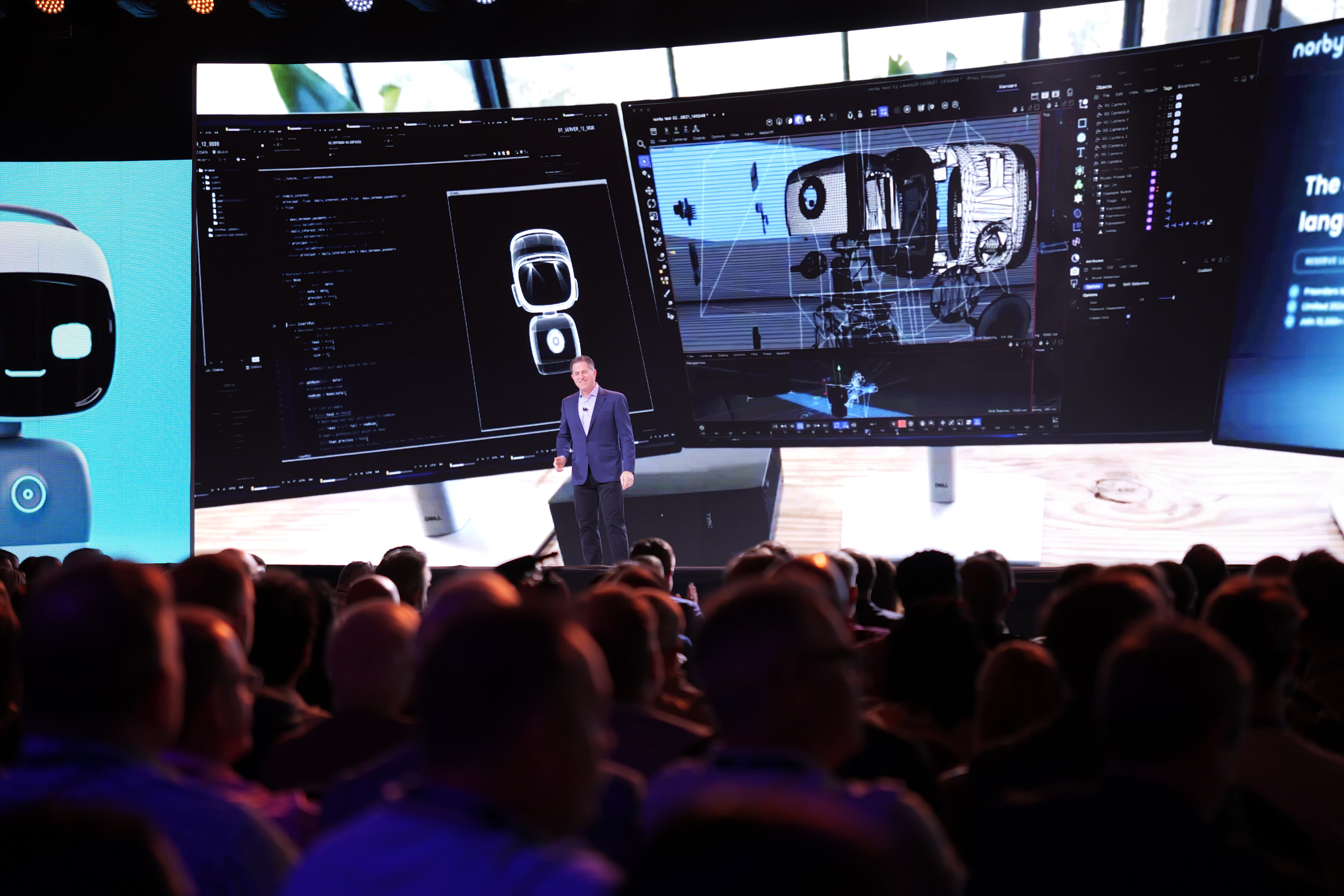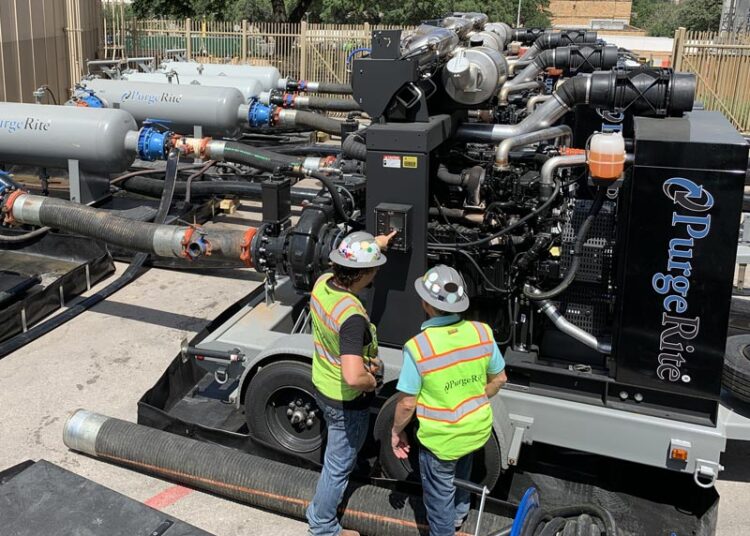Dell Technologies World 2025 continued to build momentum on day one with a powerful showcase of how Dell is evolving to meet the demands of an AI-driven world. In a compelling segment of his keynote, Chairman and CEO Michael Dell took the stage alongside NVIDIA CEO Jensen Huang to unveil the Dell AI Factory with NVIDIA 2.0—a next-generation platform designed to democratise AI access and power both enterprise transformation and individual creativity.
This marks a deepening of Dell’s long-standing partnership with NVIDIA—one of the most influential forces in AI hardware and software—as the two companies work together to tackle what they describe as the “biggest reinvention in 60 years of computing.”
Building AI infrastructure at scale
Dell reaffirmed the company’s mission to develop AI for the enterprise by continuously delivering end-to-end solutions with the right infrastructure, at the right scale, for every use case across every industry. That scale, as Dell pointed out, is expanding rapidly. He predicted the number of Dell AI Factories will grow “from thousands today to millions in the years ahead,” as more organisations build their own AI-powered systems and workflows.
To support this shift, Dell introduced its new generation of AI-optimised servers, the PowerEdge XE9680L and XE9680XL, each designed to house eight NVIDIA B100 Tensor Core GPUs, delivering up to 4x faster LLM training and 11x compute performance for inference. These servers can support up to 256 GPUs in a single rack, making them some of the most powerful systems available for enterprise AI workloads.
However, as AI infrastructure becomes denser, so do the demands on cooling and power efficiency. Dell responded with the PowerCool rear-door heat exchanger, designed to capture nearly 100 percent of heat loads, reducing energy cooling costs by up to 60 percent through advanced airflow and liquid cooling.
To deliver all this at that scale, Dell is bringing all these advancements together into the Dell AI Factory – a full-stack, integrated platform engineered for the AI era. As Michael Dell explained: “Together with improvements in compute, storage, and networking, and putting all this together, we now have the Dell AI Factory with NVIDIA version 2.0.”
Dell also introduced upgrades to networking with NVIDIA’s X800 switches, now integrated into Dell PowerSwitch models. This bolsters the infrastructure’s capability to handle massive AI traffic volumes with low latency—critical for generative and reasoning-based models.
For storage, Project Lightning was announced as the world’s fastest parallel file system. It supports training on tens of thousands, even millions, of GPUs simultaneously, offering 2x the throughput of competing systems. Meanwhile, Dell ObjectScale, integrated with NVIDIA Spectrum-X, supports petabyte-scale data lakes with real-time streaming—fueling rapid time-to-insight for AI workloads.
Finally, Dell’s advances in distributed inferencing are enabling enterprises to scale real-time AI. “The Dell AI Factory now supports a 100x increase in tokens per second for distributed inference,” said Dell. “That’s an 80% reduction in latency—perfect for the exponential growth of agentic AI.”
Transformation beyond the PC revolution
In a pre-recorded fireside conversation, NVIDIA CEO Jensen Huang joined Michael Dell to reflect on their decades-long journey—beginning with the personal computer and culminating in what both describe as the most significant technology shift of their lifetimes: artificial intelligence.
“You and I have known each other for 30-plus years,” Huang said. “We met during the PC revolution, then we saw the internet come, then the cloud, and now AI. This is, unfortunately, the single biggest platform shift. Every layer of the computing stack is being reinvented.”
While many early advances in AI were pioneered by hyperscalers and startups, both leaders pointed to enterprise AI as the next massive wave of opportunity. As organisations increasingly look to embed intelligence into their operations, Dell and NVIDIA see a surge in demand for AI agents—software entities capable of handling high-value cognitive tasks.
“These companies are building digital workforces of AI agents,” Huang explained. “They can work in cybersecurity, software engineering, marketing, sales, operations, and supply chain. They augment human capability with intelligence drawn from proprietary data.”
“Customers like Lowe’s, JPMorgan Chase, SanDisk, and Continental are already using their data to build intelligence,” Dell added, “embedding it into AI agents to enhance their business operations.”
One of the biggest shifts ahead, they noted, is bringing AI to the edge—where much of the world’s data is now being created. Rather than sending data to the cloud for analysis, enterprises increasingly want AI to run where the data lives. “Customers increasingly want to bring the AI to the data,” said Dell, “instead of the data to the AI.”
For both Dell and Huang, this moment is about preparing for a generational shift—one that mirrors, but ultimately surpasses, the revolutions of the past. “For the 400,000 to 500,000 enterprise companies around the world that built their IT in the old way,” Huang said, “it needs to be brought into the world of AI. It’s a whole new architecture.”
He closed with a call to action for enterprises weighing when and how to engage with AI: “This is a once-in-a-lifetime opportunity. In the last 60 years, this is the biggest reinvention you and I have seen. The impact to your company is incredible—and you want to be an early adopter. This is the beginning of a decade of transformation. You don’t want to be second. This is how you want to be first.”
AI beyond the enterprise
While much of the keynote focused on enterprise transformation, Dell reserved the final portion for a different message: AI’s potential to impact individual lives. One notable example was Adrian Guan, founder of an Australian startup who built Norby, a conversational AI robot designed to support language learning and speech therapy. Powered by Dell Precision workstations and NVIDIA AI, Norby can speak over 40 languages and is tailored to individual users.
As excitement around AI accelerates, Dell made it clear that innovation must come with responsibility. “AI is the new electricity,” Dell said. “And Dell is the grid powering this transformation—connecting the data, the intelligence, and the innovation.”
He added, “At our core, we’re about solving the world’s toughest challenges and enabling human requirements, and that’s happening every day in laboratories, on manufacturing floors, in boardrooms and dinner tables around the world, and we are so proud that it’s all right here on our street where ideas turn into actions.”










Discussion about this post